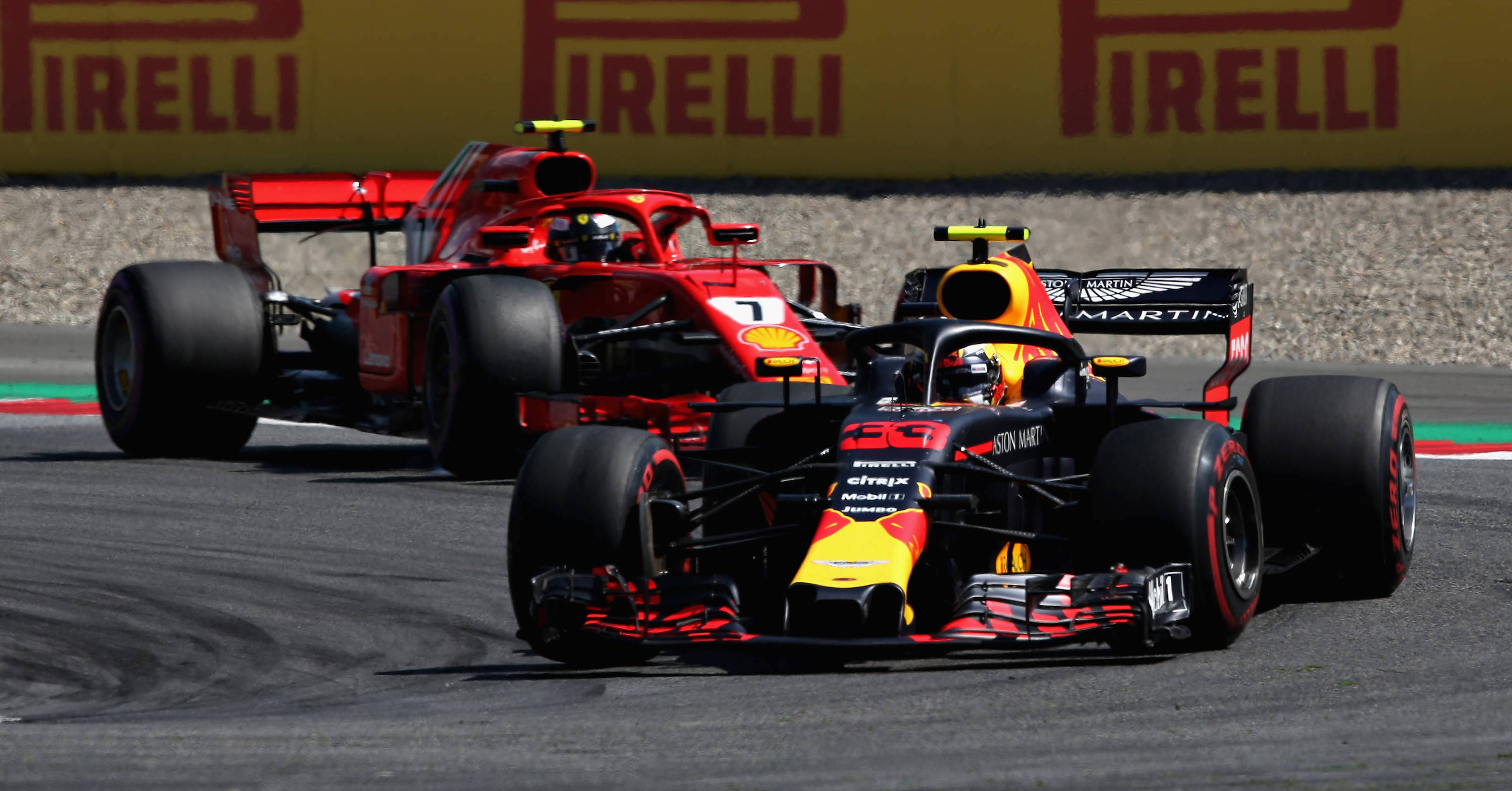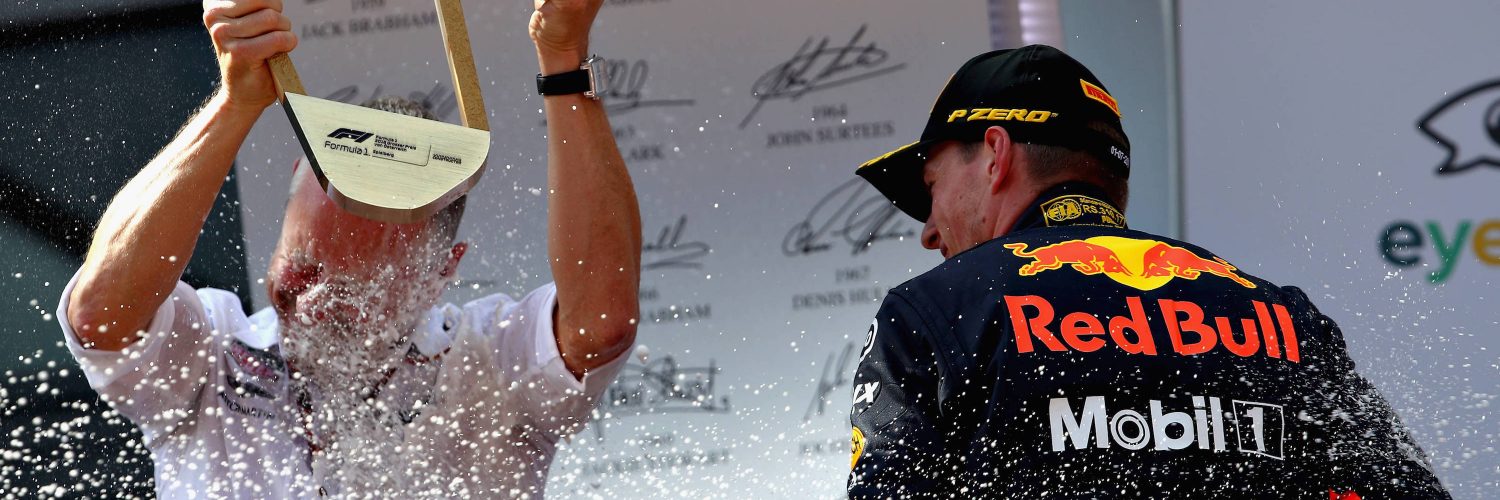Max Verstappen took full advantage of a rare double retirement from both Mercedes drivers to win the Austrian Grand Prix, leading home the Ferraris of Kimi Raikkonen and Sebastian Vettel and the Haas duo of Romain Grosjean and Kevin Magnussen.
For the Acronis Mission Control center in Silverstone, there was a double cause for celebration as Sergio Perez and Esteban Ocon enjoyed a fantastic result, making up several places from their grid positions to finish in sixth and seventh respectably.
Fernando Alonso was a remarkable eighth having started from the pit lane as Marcus Ericsson and Charles Leclerc rounded off the points scoring finishers. But there would also be no birthday celebrations for Daniel Ricciardo, the popular Aussie retiring 16 laps before the race finish.
The result means that Vettel retakes the championship lead from Hamilton by a solitary point going into the Brit’s home grand prix at Silverstone but that does not tell the picture of a disastrous race that Mercedes may live to regret.
“It was very hard to manage the tyres so we really had to look after them,” said a delighted Verstappen afterward. “A lot of blistering but we managed to hold onto them until the end. Amazing to win here with a Red Bull at the Red Bull Ring and also so many Dutch fans around here so it’s incredible.”
Hamilton had looked in prime position to take the race victory after taking the lead at the start as Raikkonen split the Mercedes duo before running wide and losing a spot to Verstappen’s Red Bull. The race seemingly settled down into a pattern of Mercedes dominance and, once again, the race was apparently theirs for the taking.
But even the best-laid plans sometimes go awry and a big spanner was thrown into the works as the unfortunate Bottas pulled off to the side of the circuit with a hydraulic failure on lap 14, crucially bringing about a Virtual Safety Car situation.
Taking advantage of the hand dealt to them were the Ferraris and Red Bulls, Mercedes inexplicably deciding not to pit their race leader and putting him at risk of the undercut. It was a decision that came back to bite them in the opening race in Melbourne and yet again it seemed a big tactical error as the championship leader dropped to fourth after his first stop on lap 25.

With the Red Bull tyres out of their prime operating range, Raikkonen sailed past Ricciardo and into second, moments later Vettel making the pass on Hamilton.
“I’m not going to be able to pass these guys, we’ve thrown away the win,” said a furious Hamilton over the radio shortly after the move.
Team tactician James Vowles was in agreement, taking full blame for the tactical gaff. “I have thrown away the win today,” Vowles tells Hamilton again. “You have the pace to get back through. We trust and believe in you.”
Belief, however, could not save Hamilton’s blistered tyres and another unscheduled stop for a fresh set of super-softs ended his hopes. A box full of neutrals, seven laps before the finish, was the final nail in the coffin and there would be no points for Mercedes on a bizarre day of racing.
With today’s incredibly reliable hybrid technology, spectacular engine failures used to be a thing of the past. But the assembled spectators were treated to an early bonfire night special as Nico Hulkenburg’s engine expired in spectacular fashion on lap 12, a cloud of smoke followed by a rooster tail of flame as the German pulled off to the side of the circuit.
As we saw at the Red Bull Ring, high-speed corner puts a huge amount of stress on the car’s tyres, the rubber on the tread being heated to around 120 degrees – hot enough to fry an egg! The suspension on the car is also given a rigorous test and needs to withstand a cornering load of approximately two and a half tonnes on the rear wishbones, around the weight of an SUV.
Most of all, as circuits such as these, having a good and reliable engine is the key to success. With the old V8 engines, attrition rates were much higher than with the new Hybrid Power Units and the sight of smoking engines a regular occurrence.
Today, cars can complete a race with the same power as back in 2013, before the regulations changed, but by using only two thirds of the fuel and with a turbocharged V6.
The change from the V6 engine to the new Hybrid Power Unit came about as a way of promoting F1 as a greener and more ‘eco-friendly’ sport by reducing CO2 emissions and reducing costs by limiting fuel consumption. It means that drivers sometimes have to kerb their natural aggression and back off to go into fuel saving mode to stay within the parameters.
Engine Recovery System
The Engine Recovery System (ERS) was the biggest change from the old V8. By harvesting heat energy from the exhaust and under braking that would usually go to waste and then redeploying it, it provides a boost of 160bhp a lap – a whopping 10 times as much energy at twice the power as the systems they replaced.
The issue of cost is a fine balancing act. Because the new Hybrid Units are significantly more complex, housing a turbocharger, fuel injection system and electronics, production costs have in fact risen from around £220,000 to £550,000. But although engine changes carry grid penalties, teams will typically now get through only half the amount as before and thus it pretty much evens out.
The ERS Unit now comprises two motor generator units (MGU-K and MGU-H), plus an Energy Store (ES) and control electronics. Under the Sporting Regulations, “each driver is permitted to use only four of the six power unit elements during a single season. Should a driver use more than this, a grid penalty will be imposed. The six elements are the internal combustion engine (ICE), the motor generator unit-kinetic (MGU-K), the motor generator unit-heat (MGU-H), the energy store (ES), turbocharger (TC) and control electronics (CE).
“The first time a fifth of any of the elements is used, a ten-place grid penalty will be imposed. A five-place grid penalty will then be imposed the first time a fifth of any of the remaining elements is used. Likewise, the first time a sixth of any of the elements is used, a ten-place grid penalty will be imposed, and so on.”
So, for the unfortunate Hulkenberg, his expired Power Unit will mean a rebuild for Silverstone.
Although it’s a marginally less complicated system for fans to follow than the engine token format that preceded it, for most fans of the sport, the most noticeable change to the engines from the old V8 is the reduction in sound. The very high rpm of the old engines produced a high frequency but because the new engines run slower and have fewer cylinders, they fire at three quarters the rate of the V8. Turbochargers also play a role, the extraction of energy from exhaust gasses also reducing sound intensity.
Top image: Race winner Max Verstappen Red Bull Racing celebrates on the podium during the 2018 Austrian F1 Grand Prix. © Mark Thompson/Getty Images/ Red Bull Content Pool.



